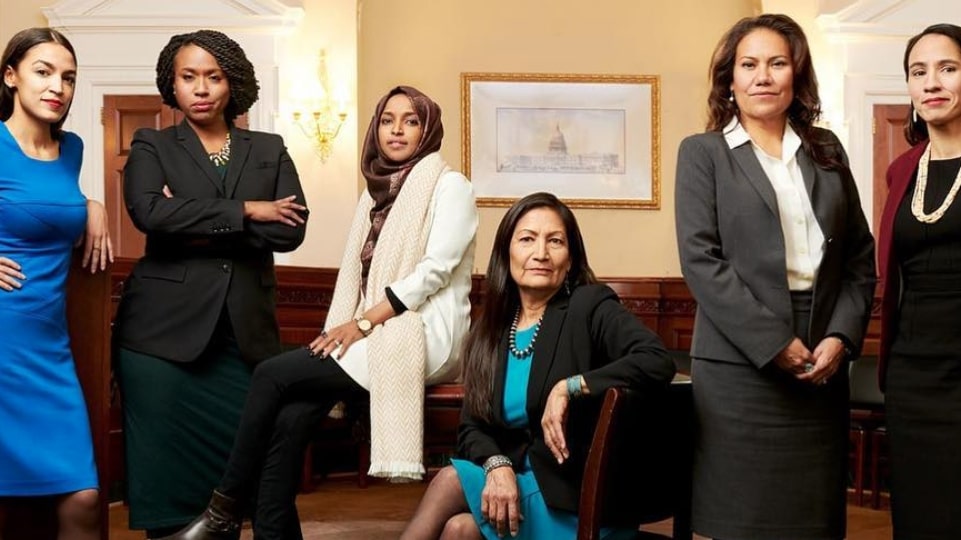Women and people of color made huge progress in the political world last year. In fact, the two groups were nearly elected at the same rate as white men running for public office.
Reflective Democracy Campaign conducted a massive study regarding the race and gender of 33,854 candidates who ran for public office in 2018, as well as 44,900 current elected officials.
While white men still overwhelmingly dominate the political sphere, women and people of color made some progress in having Congress more accurately reflect the U.S. population.
White men are only about 30 percent of the country's population, yet hold 62 percent of elected offices at the local, state and federal level.
"But while white men may still have a monopoly hold on elected office, they do not hold a monopoly on electability. In 2015, our research found that when they’re on the ballot, women of all races and men of color win elections at the same rates as white men," they wrote in their study.
"Running the data on the 2018 elections confirms it: white men’s electability advantage is a myth."
Compared to 2012, the electoral field in 2018 changed greatly. For all offices at each level, women of color saw a 37 percent increase in their share of candidates.
People of color make up about 40 percent of the country's population. Unfortunately, people of color represent only 11 percent of those serving in office.
The study noted that more women were running for a variety of seats, particularly in statewide races.
"Since 2015, women of color have increased dramatically as both candidates and elected officials across all levels of office, driving an overall increase in the representation of people of color," they say in the study.
"Especially noteworthy are their 40 percent increase in Congressional seats and 38 percent increase in State Legislature seats.At 7 percent of elected representatives, men of color have stronger representation than their female counterparts, but they have gained seats at a rate of only 0.5 percent since 2015, compared with a striking 30 percent increase among women of color."
Candidates like Rep. Rashida Tlaib, Rep. Ilhan Omar, Rep. Alexandria Ocasio-Cortez, and Rep. Ayanna Pressley managed to pull off wins and diversify congress.
Another part of the story showed the massive increases in women and people of color running for office between 2015-2017 and 2017-2019. Specifically, the study pegged these huge spikes to the election of Donald Trump. The 2016 U.S. Presidential Election galvanized women across the country and prompted a wave of primary challenges from fresh-faced candidates.
The number of women of color who now hold state legislator seats increased by just 4 percent from 2015-2017 but grew to a whopping 33 percent from 2017-2019.
Unfortunately, the changes have mostly been seen in the Democratic Party. However, the Republican Party has seen little to no change in the demographic makeup of its candidates over the last five years.
"While the Democratic Party ran more women of all races and men of color in 2018 than in 2012, progress among Republican candidates was uneven," the study says.
"While white women increased significantly, men of color declined as a share of Republican candidates and women of color remained a tiny fraction, hovering just over 1 percent."
Certain states saw bigger changes than others. Four states saw a 50 percent increase in woman candidates in 2018 and another four states saw an increase of about 40 percent.
Black women have made huge strides in local elections and now four of the country's 25 largest cities are run by Black women.
Despite the increase in diversity among people running, the main obstacle to true demographic change are uncontested seats, which are overwhelmingly held by white men. These seats are almost all at the county level but for decades the same candidates have run unopposed, and nearly 60 percent of these seats are held by white men.
"We have a long way to go before all Americans see themselves reflected in the representatives making crucial policy choices about our lives. At 51 percent of the population, women still make up less than one quarter of Congress, and millions live in states where men hold over three quarters of legislative seats," the study added.
"People of color, who are 40 percent of Americans, hold only 11 percent of elected seats. White men still overwhelmingly control political power, holding elected office at double the rate of their population."

